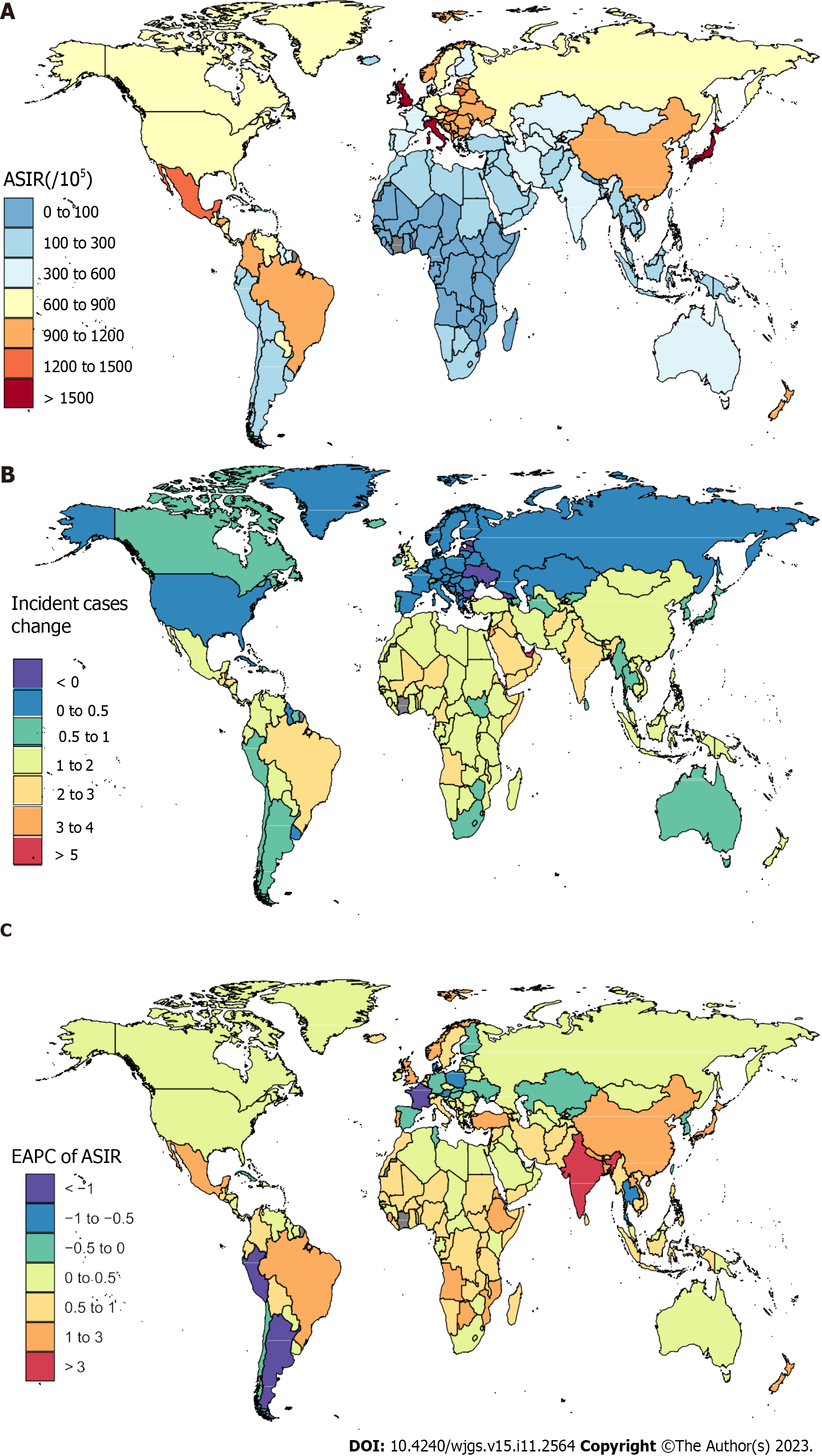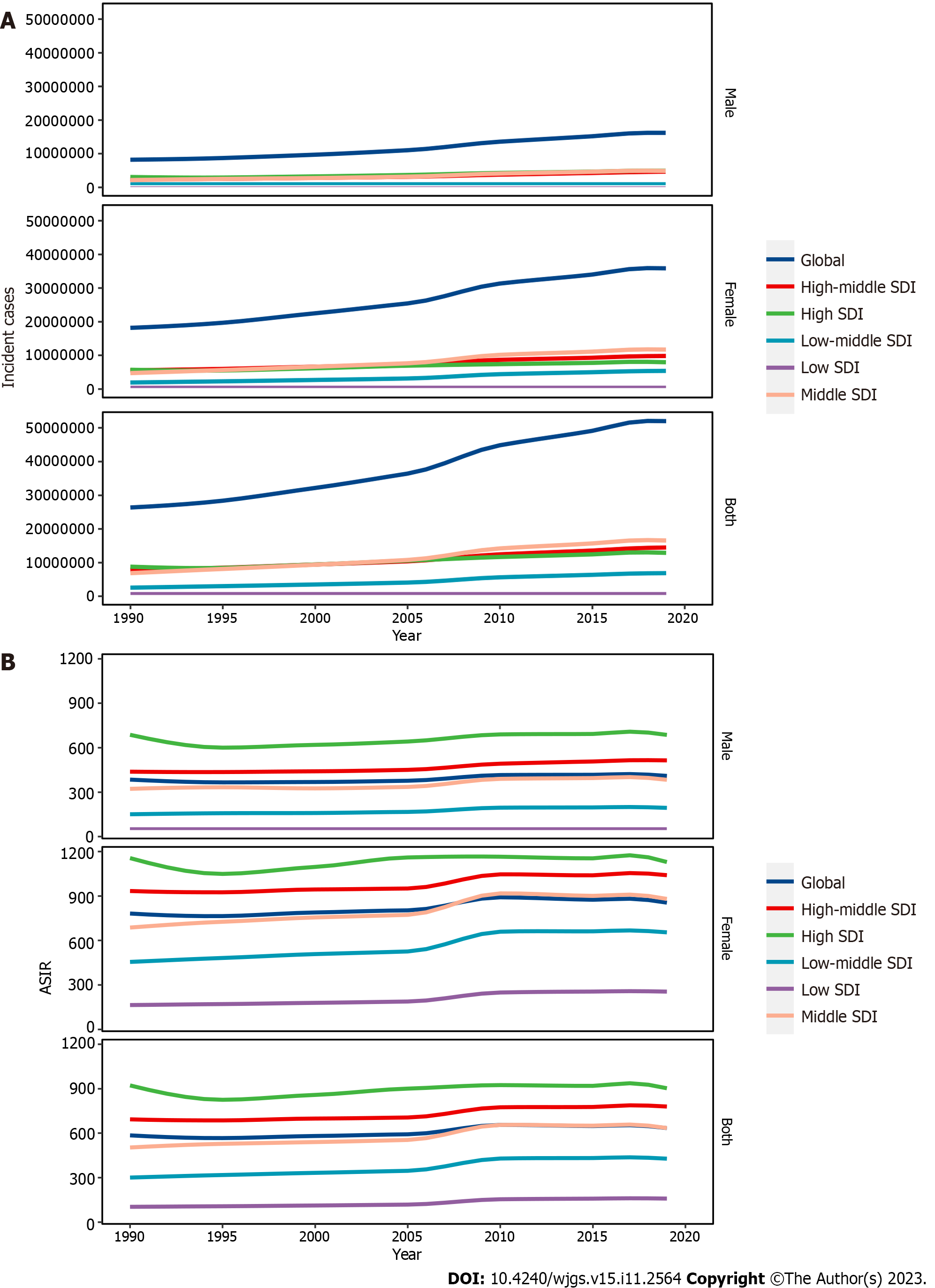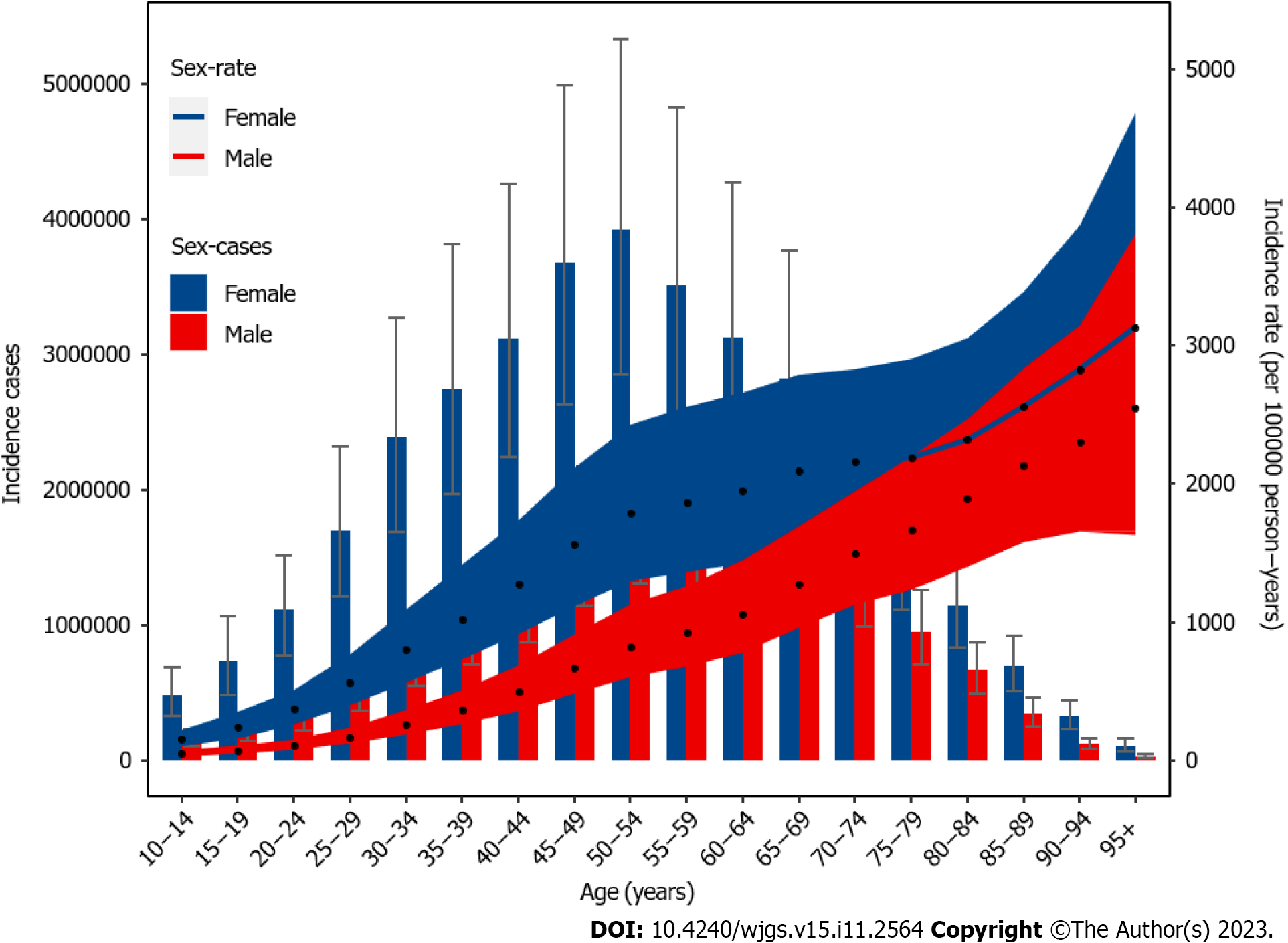Copyright
©The Author(s) 2023.
World J Gastrointest Surg. Nov 27, 2023; 15(11): 2564-2578
Published online Nov 27, 2023. doi: 10.4240/wjgs.v15.i11.2564
Published online Nov 27, 2023. doi: 10.4240/wjgs.v15.i11.2564
Figure 1 The global disease burden of gallbladder and biliary diseases for both sexes in 204 countries and territories.
A: The age-standardized incidence rate (ASIR) of gallbladder and biliary disease (GABD) in 2019; B: The relative change in incident cases of GABD between 1990 and 2019; C: The estimated annual percentage change of GABD ASIR from 1990 to 2019. ASIR: Age-standardized incidence rate; EAPC: Estimated annual percentage change.
Figure 2 Incident cases, age-standardized incidence rate of gallbladder and biliary diseases at global and regional level from 1990 to 2019.
A: Incident cases; B: Age-standardized incidence rate. ASIR: Age-standardized incidence rate; SDI: Sociodemographic index.
Figure 3 Levels and trends in all ages incidence cases of gallbladder and biliary diseases across 21 global burden of diseases regions by sex.
A: The incidence cases of gallbladder and biliary disease (GABD) in 2019; B: The percentage change in incidence cases of GABD from 1990 to 2019; C: The age-standardized incidence rate (ASIR) of GABD in 2019; D: The percentage change in ASIR of GABD from 1990 to 2019. GBD: Global Burden of Diseases Study; EAPC: Estimated annual percentage change.
Figure 4 Age-specific numbers and rates of incident cases of gallbladder and biliary diseases by sex, 2019.
Figure 5 The correlation between estimated annual percentage change and gallbladder and biliary diseases age-standardized incidence rate in 1990 and human development index in 2021.
A: The correlation between estimated annual percentage change (EAPC) and gallbladder and biliary diseases age-standardized incidence rate in 1990; B: The correlation between EAPC and human development index (HDI) in 2021. The circles represent countries that were available on HDI data. The size of the circle is increased with the cases of gallbladder and biliary diseases. The ρ indices and P-values presented in (A) and (B) were derived from Pearson correlation analysis. EAPC: Estimated annual percentage change; HDI: Human development index; ASR: Age-standardized rate.
- Citation: Li ZZ, Guan LJ, Ouyang R, Chen ZX, Ouyang GQ, Jiang HX. Global, regional, and national burden of gallbladder and biliary diseases from 1990 to 2019. World J Gastrointest Surg 2023; 15(11): 2564-2578
- URL: https://www.wjgnet.com/1948-9366/full/v15/i11/2564.htm
- DOI: https://dx.doi.org/10.4240/wjgs.v15.i11.2564













